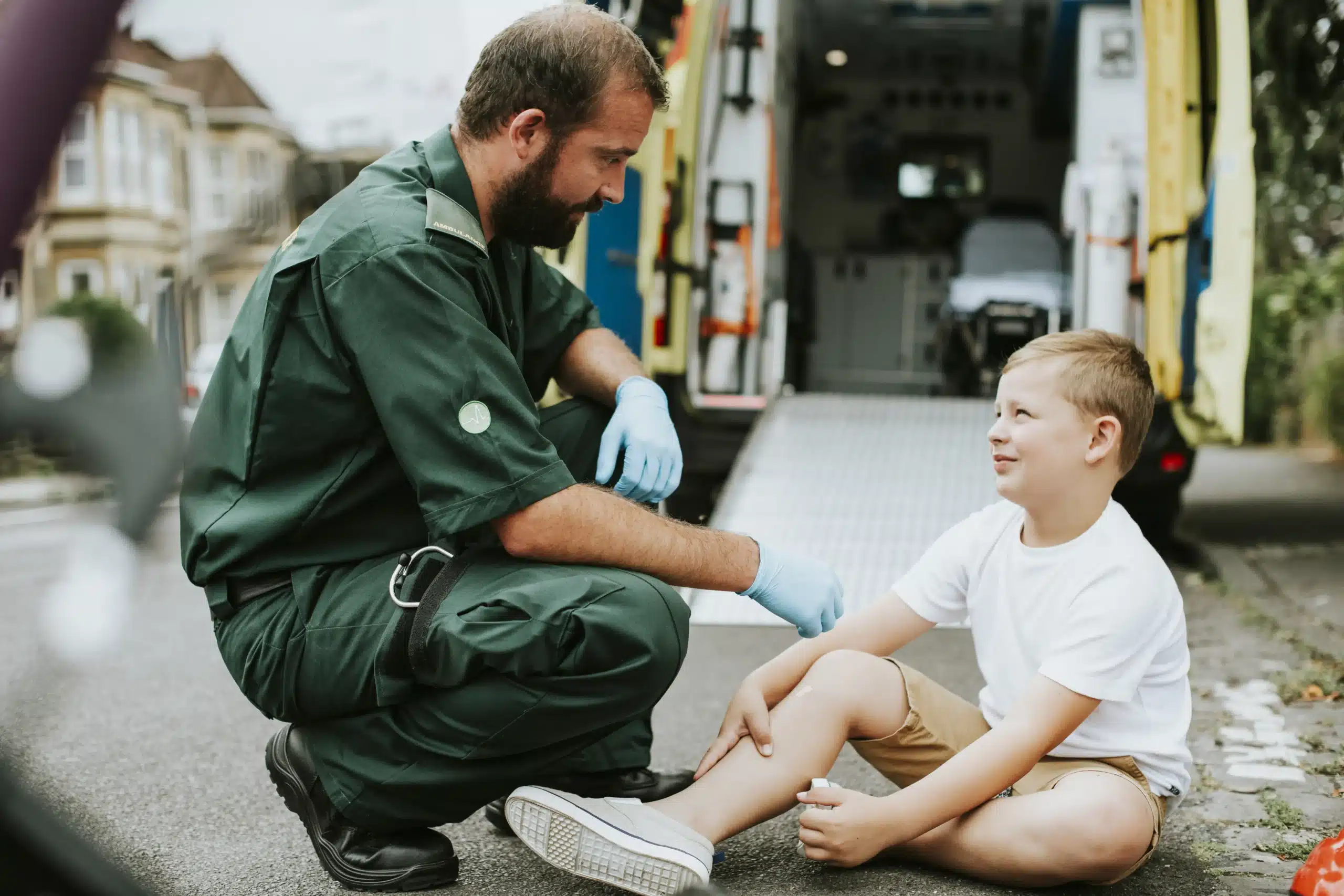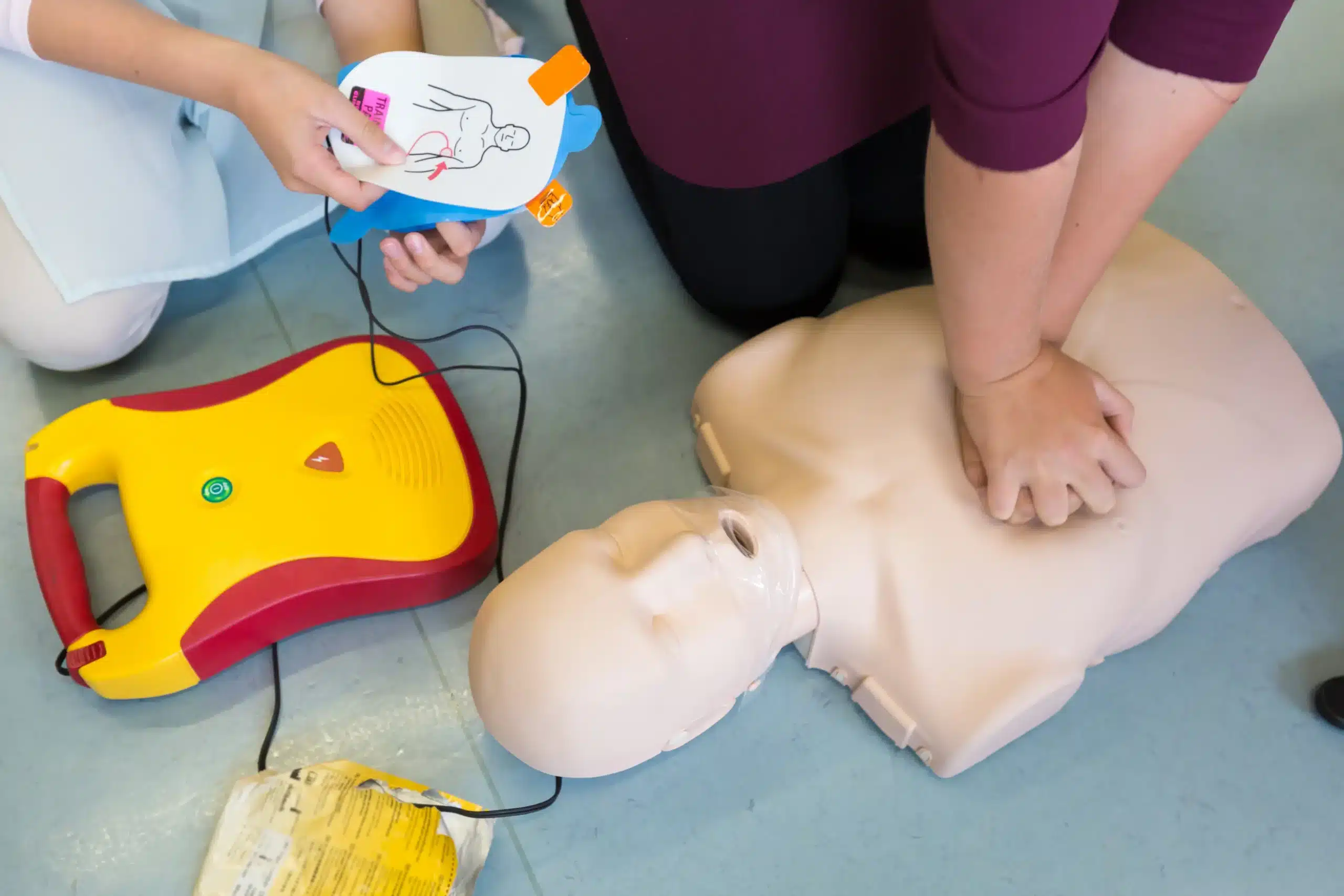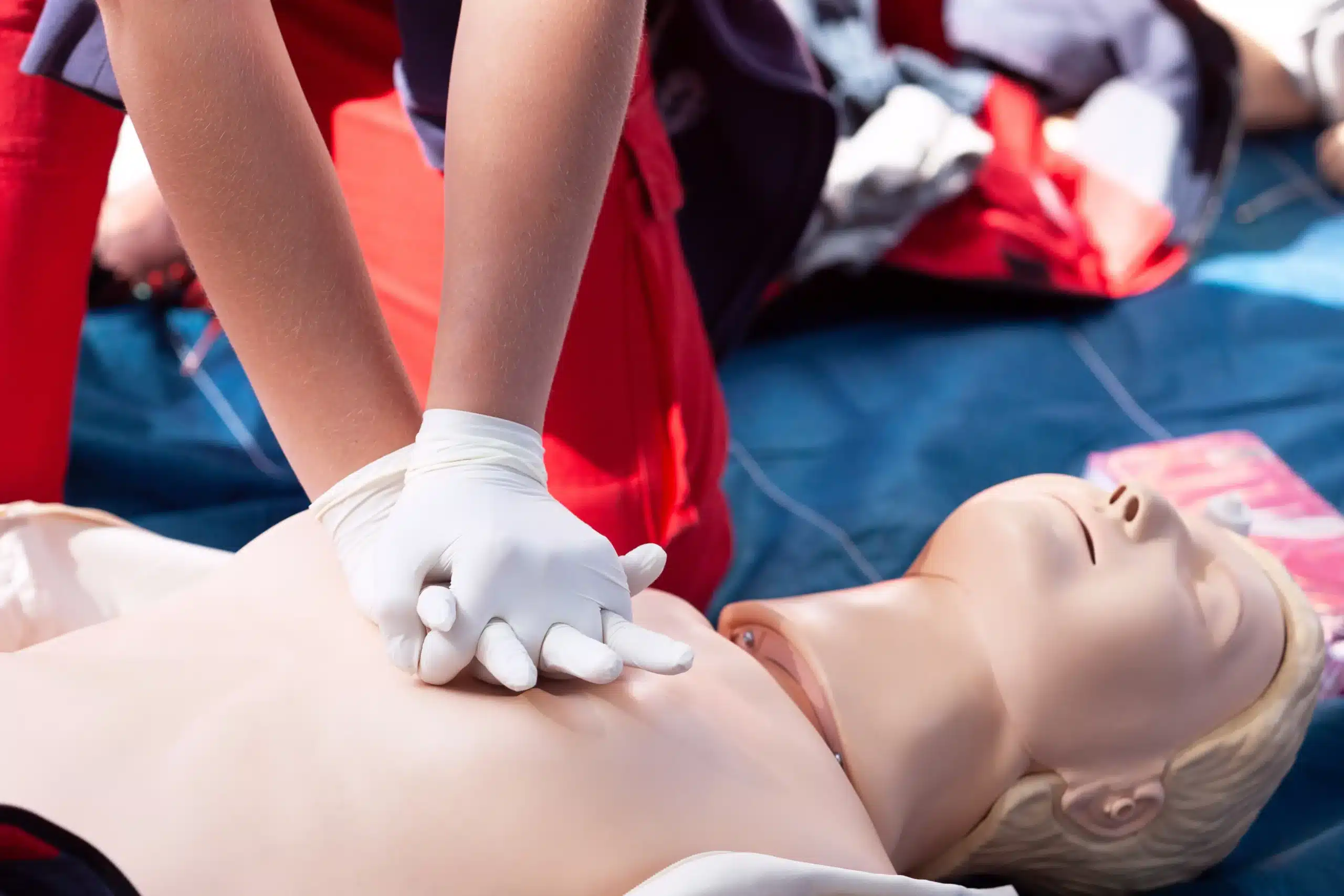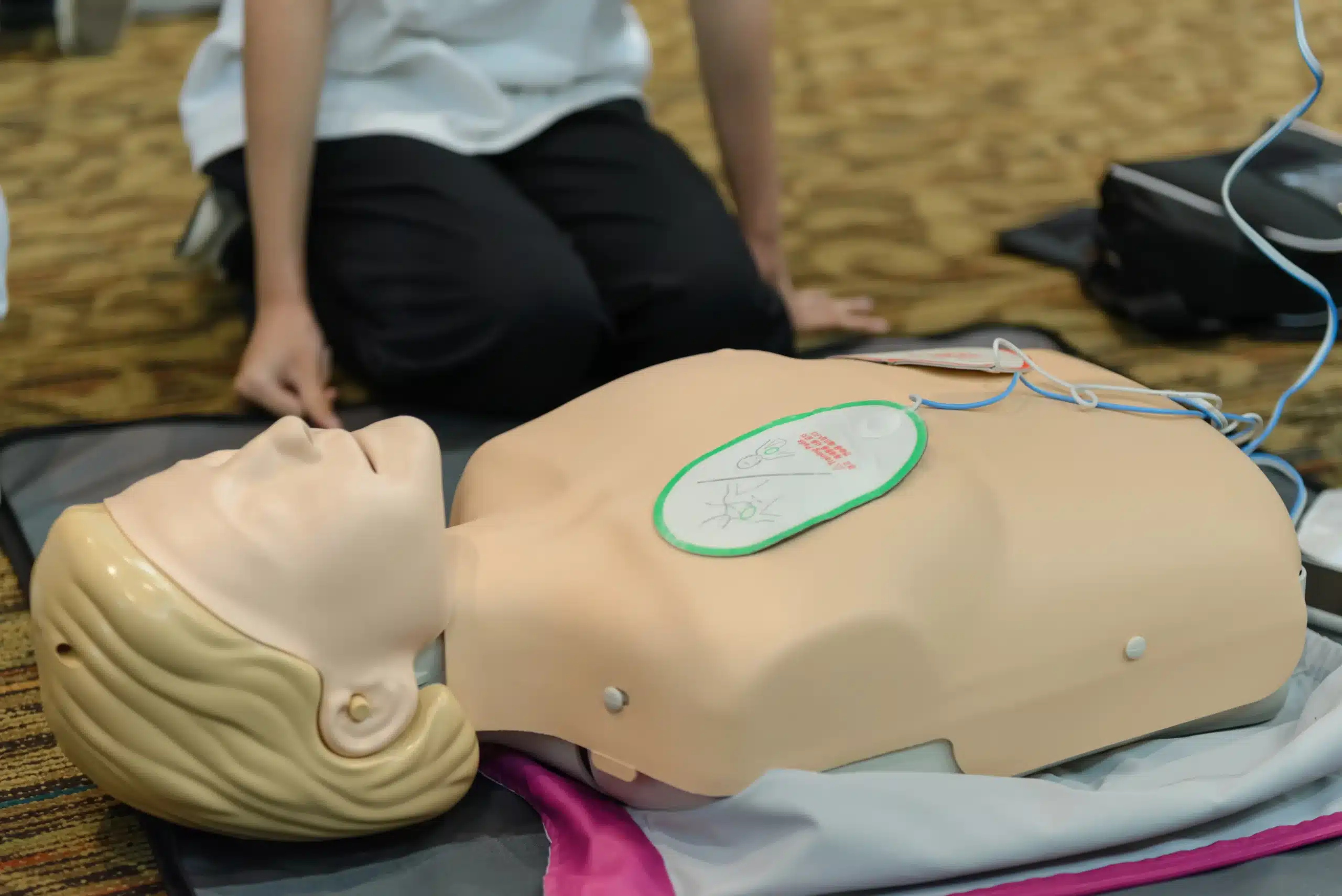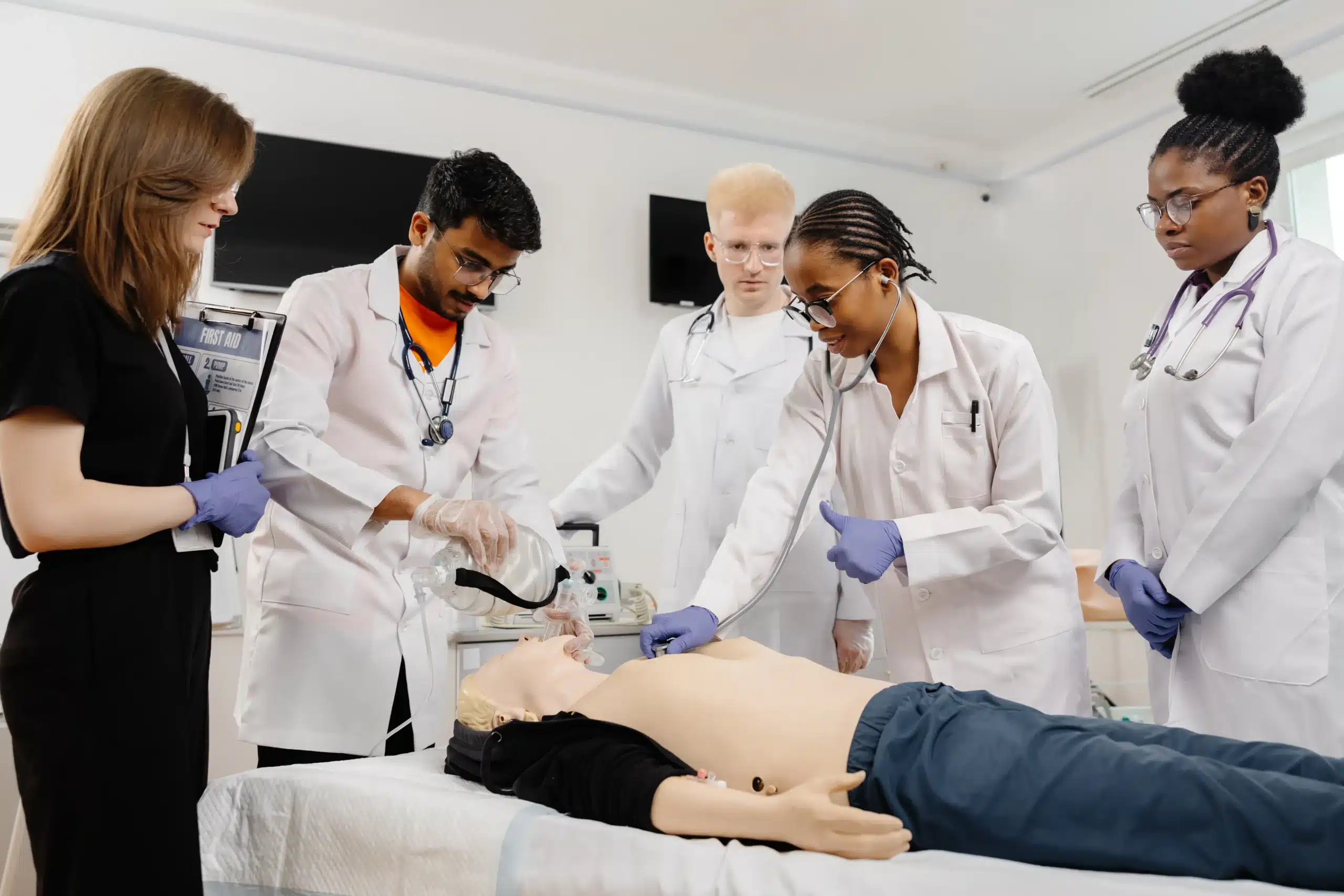Working with children is a rewarding experience, but it also comes with a significant responsibility: ensuring their safety and well-being. Preschool CPR training provides you with the essential skills to respond effectively in medical emergencies, giving you the confidence to act quickly and decisively when every second counts. This comprehensive guide covers everything you need to know about preschool CPR training, from the importance of pediatric-specific techniques to choosing the right certification program. We’ll also discuss the legal requirements for childcare providers, the benefits of CPR training for both staff and children, and how to maintain your certification over time. Let’s explore how preschool CPR training can empower you to create a safer and more secure environment for the children in your care.
Key Takeaways
- Prioritize CPR training for your preschool staff: Equipping your team with these life-saving skills creates a safer environment for children and demonstrates your commitment to their well-being. Plus, it might be a legal requirement, so check your local regulations.
- Select a CPR program that fits your needs: Look for reputable organizations offering pediatric-specific training and certifications recognized in your area. Think about what works best for your team: in-person classes, online learning, or a blended approach. Don’t forget to ask about group discounts!
- CPR skills require upkeep: Staying certified means renewing every two years and practicing regularly to keep your skills fresh. Remember, even if you’re not a medical professional, CPR knowledge can make a real difference in an emergency.
Why is Preschool CPR Training Essential?
As a childcare provider, the safety and well-being of the children in your care is your top priority. CPR training equips you with the skills to respond effectively in emergencies, giving you confidence and peace of mind. It’s not just about feeling prepared—CPR certification can be a legal requirement and a significant advantage for your preschool.
What is the Importance of CPR in Childcare?
In any childcare setting, emergencies like choking, respiratory distress, or sudden cardiac arrest can happen. Pediatric CPR training gives you the skills to respond to these situations in infants and children. It goes beyond general CPR, addressing the unique physiological differences between children and adults. This specialized knowledge can make all the difference. Plus, demonstrating a commitment to safety through CPR certification can give you an edge in today’s competitive childcare market. It shows parents you’re taking extra steps to create a safe and nurturing environment.
Legal Requirements for Preschool Staff
Many states require preschool staff to have current CPR and first aid certifications. These regulations vary, so it’s important to check your local requirements. The Centers for Disease Control and Prevention (CDC) also offers recommendations for childcare worker training. Staying up-to-date with your certifications ensures you comply with the law and shows your commitment to maintaining a safe environment. Regular re-certification courses make it easy to refresh your skills and knowledge.
Benefits for Staff and Children
The benefits of CPR training go beyond simply checking a box. CPR certification empowers you with life-saving skills and builds your confidence in handling emergencies. Knowing you can respond effectively in a crisis reduces anxiety and helps you react calmly and efficiently if a situation arises. This preparedness creates a safer environment for the children and builds trust among staff, parents, and the community. Investing in CPR training is an investment in the well-being of everyone in your care.
What Does Preschool CPR Training Cover?
Preschool CPR training equips caregivers with the skills to respond effectively to emergencies involving young children. These courses cover a range of life-saving techniques and essential knowledge.
Key Pediatric CPR Skills
Pediatric CPR focuses on the physiological differences between children and adults. You’ll learn how to assess a child’s responsiveness, check for a pulse, and perform chest compressions and rescue breaths appropriate for their age and size. Training also emphasizes recognizing the signs of respiratory distress, choking, and cardiac arrest in infants and children. As ChildCareEd notes, this training is a commitment to the safety and well-being of the children in your care.
Infant vs. Child CPR Techniques
CPR techniques vary depending on whether you are assisting an infant (under one year old) or a child (one year old to puberty). Infant CPR often involves using two fingers for chest compressions and covering both the nose and mouth during rescue breaths. Child CPR typically uses one or two hands for compressions, depending on the child’s size, and rescue breaths are given mouth-to-mouth. These specialized skills are crucial for daycare providers, as highlighted by Arise Safety.
First Aid and AED Training for Preschools
In addition to CPR, preschool training programs often include basic first aid and AED instruction. First aid covers common childhood injuries like cuts, burns, and allergic reactions. AED training teaches caregivers how to safely operate an automated external defibrillator in the event of sudden cardiac arrest. CPR Classes Providence emphasizes how essential CPR and first aid training is for childcare providers. You can find additional safety training, such as water safety instruction, through organizations like the Red Cross.
How to Choose a Preschool CPR Training Program
Finding the right CPR training program for your preschool staff is crucial for a safe learning environment. Several reputable organizations and providers offer certification courses, each with its own advantages. Here’s a breakdown to help you make the best choice:
American Heart Association Certification
The American Heart Association (AHA) offers CPR and First Aid classes that meet industry certification requirements for childcare providers. Their Basic Life Support (BLS) certification is also a good option for any healthcare professionals working in your preschool, such as nurses or on-site clinicians. AHA certifications are widely recognized and respected.
American Red Cross Certification
The American Red Cross also provides CPR and First Aid classes for various audiences, including childcare providers. Their training programs equip participants with practical skills to respond effectively in emergencies. Check your state’s licensing requirements to ensure Red Cross certification fulfills them.
EMSA-Approved Programs
In California, EMSA-approved programs are specifically designed for childcare providers. These programs cover Pediatric First Aid, Pediatric CPR/AED, and Preventive Health and Safety Training. Initial training typically requires 16 hours, with renewals every two years. An EMSA-approved program ensures your staff meets California’s requirements for childcare health and safety.
Safety Training Seminars
Many organizations, like Safety Training Seminars, offer specialized CPR training. Prioritize providers that focus on pediatric CPR and tailor their instruction to the needs of infants and children. This specialized training can be a valuable asset. Safety Training Seminars offers the American Heart Association BLS course for healthcare providers and the American Academy of Pediatrics NRP course.
Local Healthcare Providers
Your local hospitals or clinics may offer convenient CPR training classes for preschool staff. These often cover first aid basics, CPR, and AED use for different age groups. Contact healthcare providers in your area to learn about their programs and whether they meet state licensing requirements for childcare providers. CPR Classes Oakland serves Alameda, Oakland, and Berkeley, CA, and offers a low price guarantee and discounts for group classes.
Training Formats and Benefits
When it comes to CPR training for preschool staff, you have several options. Each format offers unique advantages, so consider your team’s learning styles, scheduling needs, and budget. Let’s break down the pros and cons of each approach.
In-Person Classes: Hands-On Practice
In-person CPR training provides crucial hands-on experience, guided by an expert instructor. This is invaluable for mastering the physical techniques, especially for infants and children. As Arise Safety and CPR points out, pediatric CPR training addresses the specific needs of young ones, something you won’t get from a generic CPR course. In-person classes also allow for immediate feedback and create a collaborative learning environment where your team can practice together and ask questions in real-time. This direct interaction can build confidence and ensure everyone feels comfortable performing CPR in a real emergency. Safety Training Seminars offers group discounts for in-person CPR classes, making it a cost-effective choice for preschools.
Online Courses: Flexibility and Convenience
Juggling a busy schedule? Online CPR courses offer flexibility and convenience. Preschool.org highlights the benefit of online learning, allowing educators to complete coursework at their own pace and fit it around existing commitments. This format is perfect for those who might find it difficult to attend scheduled in-person sessions. Online courses can also be more budget-friendly, making them an attractive option for smaller preschools or those looking to train a large number of staff members. Check out our low price guarantee.
Blended Learning
Blended learning combines the best of both worlds. You’ll typically complete the theoretical part of the course online, learning at your own speed and reviewing materials as needed. Then, you’ll attend an in-person skills session to practice what you’ve learned under the guidance of a certified instructor. This approach offers a comprehensive learning experience, ensuring you grasp both the “why” and the “how” of CPR. CPR & Safety Training emphasizes the value of this combined approach, offering onsite mobile training that brings the practical skills session directly to your preschool. This can save time and minimize disruption to your daily routine. Consider our American Heart Association-certified courses for a blended learning experience.
Cost and Accessibility
Getting CPR certified doesn’t have to break the bank. Let’s explore the costs associated with CPR training and some ways to make it more accessible.
Certification Costs
CPR training equips caregivers with essential skills to respond to emergencies like choking, respiratory distress, and sudden cardiac arrest. Certification not only helps you meet legal requirements but also enhances your professional reputation and builds confidence in your abilities. The cost varies depending on the provider and the type of course, generally ranging between $50 and $100. Check with providers like Safety Training Seminars for their current pricing.
Renewal Fees
CPR certifications typically expire after two years, ensuring rescuers stay up-to-date with the latest guidelines. Renewal courses are usually shorter and less expensive than the initial certification. Some employers require annual recertification, so check your workplace policies. Verywell Health offers more information on CPR certification validity.
Group Discounts
If you’re training multiple staff members, consider group discounts. Many providers, including Safety Training Seminars, offer reduced rates for group bookings, making training more affordable. On-site training is often available, minimizing workday disruptions.
Financial Assistance
While CPR training is a valuable investment, financial assistance might be available. Explore options through local community organizations, government programs, or your employer. Obtaining these life-saving skills demonstrates your commitment to the children in your care. ChildCareEd offers further insights into the importance of pediatric first aid and CPR training.
Maintaining CPR Certification
CPR certification isn’t a one-time thing. It requires ongoing maintenance to ensure you’re always prepared for an emergency. Staying up-to-date with the latest guidelines and keeping your skills sharp are crucial for providing effective care when it matters most. This section covers how to maintain your certification, practice your skills, and debunk common CPR myths.
Renewing Your Certification
CPR certifications typically expire after two years. To maintain your credentials and stay current with any updates to CPR guidelines, renew your certification before it lapses. Check with your certifying organization, such as the American Heart Association or the American Red Cross, for specific renewal requirements and course availability. Safety Training Seminars offers convenient and affordable renewal courses to help you stay certified.
Practicing Your Skills
Even with a valid certification, regular practice is essential to maintain proficiency in CPR. Consider incorporating practice sessions into your routine to keep your skills fresh. You can practice on a CPR manikin or visualize the steps and mentally rehearse the procedures. Some organizations offer free online refresher courses and resources to help you maintain your skills between renewals.
Debunking CPR Myths
Several misconceptions surrounding CPR can create hesitation or confusion. Let’s address a few common myths:
- Myth 1: CPR is only for medical professionals. While healthcare providers regularly use CPR, it’s a valuable skill for everyone. Knowing CPR can empower you to respond effectively in emergencies involving family, friends, or even strangers. CPR training benefits everyone. You never know when you might need it.
- Myth 2: Online CPR training is equivalent to in-person training. Online courses offer flexibility, but they often lack the hands-on practice crucial for mastering CPR techniques. In-person training provides the opportunity to receive instructor feedback and practice on manikins, leading to greater confidence and competence. Safety Training Seminars offers in-person classes in Oakland.
- Myth 3: CPR always revives someone in cardiac arrest. While CPR is a life-saving technique, it doesn’t guarantee survival. Its primary purpose is to maintain blood circulation and oxygen flow to vital organs until professional medical help arrives. Even if someone doesn’t immediately regain consciousness, CPR significantly increases their chances of survival and positive neurological outcomes. Learning CPR is about being prepared to make a difference in a critical situation.
Related Articles
- Why CPR is Crucial in Healthcare
- The Importance of Workplace CPR & First-Aid Training
- Pediatric CPR & First-Aid Training in Oakland – Oakland CPR Classes
- Pediatric Advanced Life Support (PALS) in Oakland – Oakland CPR Classes
- CPR Training in Oakland: Your Complete Guide – Oakland CPR Classes
Frequently Asked Questions
Is CPR certification required for all preschool staff?
CPR and first aid certification requirements vary by state. Check your local regulations and licensing requirements to determine the specific certifications needed for your preschool staff. The CDC also provides recommendations for childcare worker training, which can be helpful even if not legally required.
What’s the difference between CPR for adults and CPR for children?
Child and infant CPR techniques differ significantly from adult CPR due to variations in body size and physiology. Pediatric CPR training focuses on these differences, teaching appropriate compression depths, hand placements (one or two hands for children, two fingers for infants), and rescue breathing techniques. Specialized training ensures you can respond effectively to emergencies involving young children.
How often do I need to renew my CPR certification?
CPR certifications typically expire every two years. Renewal courses are generally shorter than initial certification courses and cover any updates to CPR guidelines. Staying current with your certification ensures you have the most up-to-date knowledge and skills.
What if I can’t afford CPR training?
While CPR training is an investment, financial assistance may be available. Explore options through local community organizations, government programs, or even your employer. Many training providers also offer group discounts, which can make training more affordable for preschools.
What if I’m nervous about performing CPR in a real emergency?
It’s natural to feel apprehensive about using CPR in a real-life situation. High-quality training programs emphasize hands-on practice and provide opportunities to ask questions, which helps build confidence. Regularly practicing your skills and visualizing the steps can also reduce anxiety and prepare you to respond effectively in an emergency.
